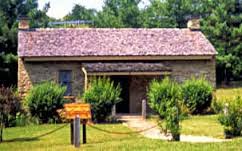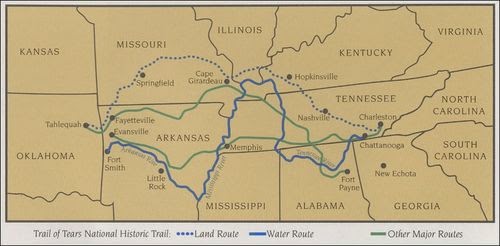 |
| The Courthouse |
It appears more and more authors are writing about the historical west, but not because of me, hopefully, because readers want more about Cowboys and Indians...and even romance. One of the keys to writing historical novels is to pepper enough history throughout to help the reader learn something aside from your story.
In Ellie's Legacy, my heroine, Ellie Fountain, lives in Sparta TN...actually an unincorporated area above called Bon Air, but Sparta was where the stores, churches, and civilization existed.. I've tried adding facts throughout the story to help describe the period. Today, I'm adding some more that people from TN might not know.
Sparta became the county seat in 1809, and was the first capitol of Tennessee. When state legislators decided to change the location, Sparta lost to Nashville by one point.
I lived in Sparta for a time, and loved it. It's a small community that really gave credence to "Southern Hospitality." I think forming friendships is a main benefit of living in a place where the population isn't inflated. Unfortunately, we were forced to move because the median wage there is just above poverty, and employment benefits died when most of the businesses went to Mexico. Those who remain are employed by the retail stores and few business that stayed or residents farm the land. I can't believe I made a whopping $7.55 per hour to be correction's officer at the local jail...but that conjures up a whole different story.
 |
| The Rock House |
 |
| Beautiful Fall in an Orchard in Sparta |
Sometimes authors have an uncontrollable urge to respond to those less than favorable reviews left on Amazon. I had one that questioned the accuracy of mining in Sparta...claimed she knew better. To her, here...I offer this proof:
White County was the site of a very large saltpeter mining operation during the Civil War. The Cave Hill Saltpeter Pits (No. 1 and No. 2), located on Cave Hill near the mouth of England Cove, were intensively mined and still contain numerous relics from that operation. Saltpeter is the main ingredient of gunpowder and was obtained by leaching the earth from these caves. http://en.wikipedia.org/wiki/White_County,_Tennessee
For those of you who are a fan of old country music, one of the first things you'll see when you enter the city, is a memorial to Lester Flatt of Flatt and Scruggs fame.
Anyhow, I'm doing an interview here...so let's get on with it. There is more historical in my novel.
INT – So, Ellie, tell the readers a little about Ginger's story.
RF – *Smiles* Well, I can’t give away too much. Ginger would skin me alive, but I’m sure she won’t mind me telling you that it’s got a little romance, a lot of western, and even more feistiness than her last historical romance. My problems begin when Pa hires Tyler Bishop as the ranch foreman. I kinda figured Pa always wanted a son, and Ty proves me right. Their relationship gets me pretty riled up. I have a bad temper at times… I think it comes from this red hair. *pulls a strand forward and grins*.
INT – So, besides your jealousy of Ty, is there any adventure involved.
RF – Oh, you bet. *Squares herself in her chair*. The polecats that live on the neighboring ranch are aiming to get Fountainhead away from Pa. Dude Bryant and his twin boys are meaner than snakes… well at least Dude and Jeb are. Joshua comes across as quiet and a follower. But, *balls hands into fists* I’ll be danged if they’re gonna get my legacy. I actually bought a gun and taught myself to shoot it.
INT – A gun? What for?
RF – Protect Fountainhead of course. I’m aim to show Pa he don’t need Tyler Bishop around when he has me. I just wish Ty wasn’t so dang good lookin’.
INT – I haven’t heard you mention your mother. How does she feel about you owning a gun?
RF - *Lowers her eyes*. My ma died when I was very young. I suppose that’s why I took up with the ranch hands and spend so much time workin’ outdoors. *Raises a steely gaze*. But, now that Ty’s in the picture, Pa wants me to spend more time in the house doing womanly things.
INT – Would that be such a bad thing?
RF – Of course it would. I don’t much care for makin' vittle’ and cleanin’. We have Cook for that. I’d much rather brand a cow as fry one.
INT – So what about the romance part of the story?
RF – *Chews her bottom lip for a moment* Well, I accompany Ty to a dance in Sparta, and as usual, he gets my dander up there, too. I never should have gone, but those eyes of his make my knees weak. My better judgment flew right out the window. *Takes a deep breath* What happens from then on, you’ll have to find out for yourself. I may look young and naïve, but I’m not silly enough to give away the whole story. Miz Ginger is counting on sales to help pay for some sort of operation to make her look younger *Looks confused* Can they do that?
INT – I don't know anything about plastic surgery, so let's get back to story. I've read the book and know the dance holds a key to the suspenseful part of the story, but I certainly wouldn’t want you give away too much. You’ve already given us enough of a teaser to stir some interest. Hopefully we’ll see you on a best seller’s list somewhere.
RF – That would be right nice. It just may happen cause remember, I have a gun. *Slaps hip and fakes a draw*.
INT - Well, here’s hoping you don’t have to use it. *laughs*. Thank you so much, Ellie for being with us today. And good luck in the future.
INT – I've sure they do, Ellie. Thanks again for being here.








.jpg)











.jpg)








